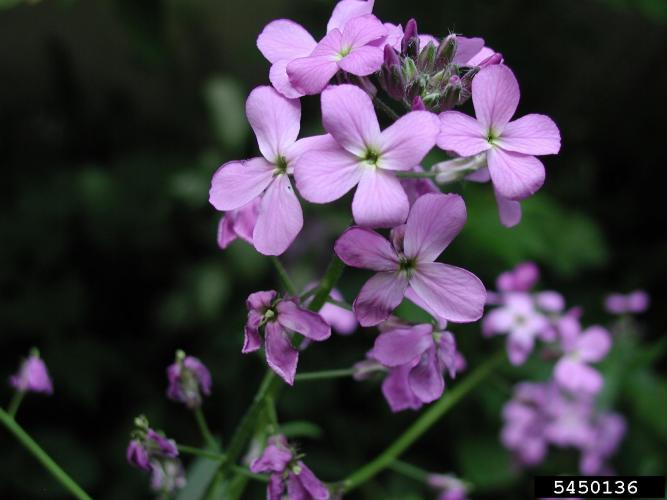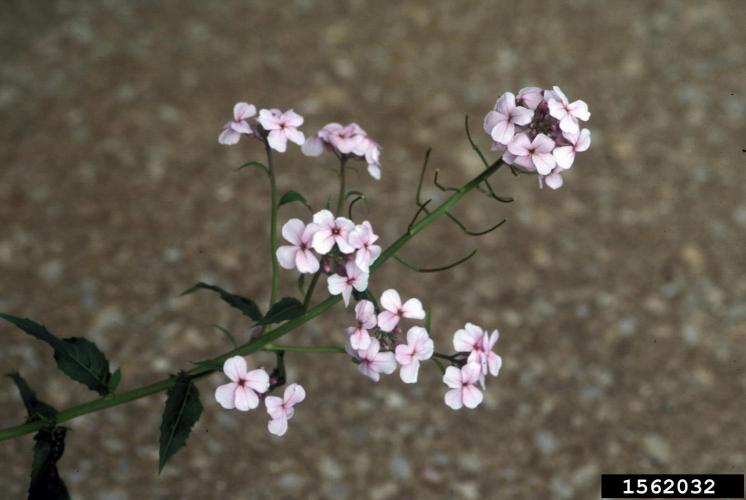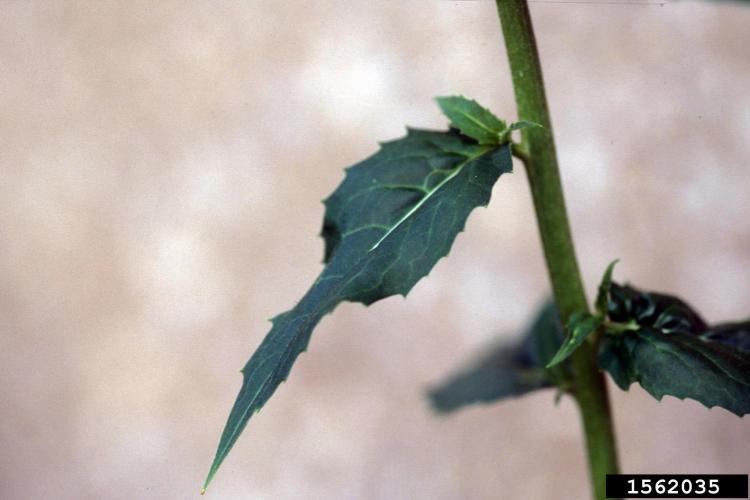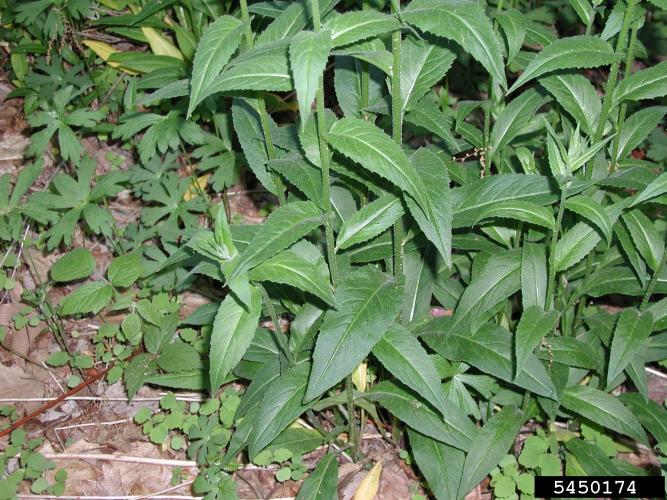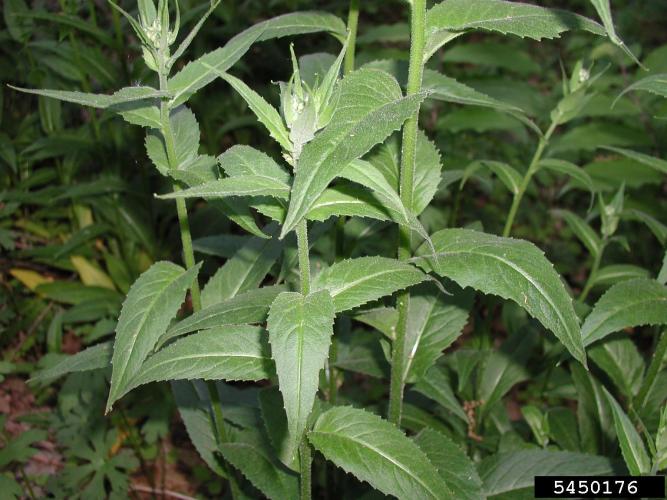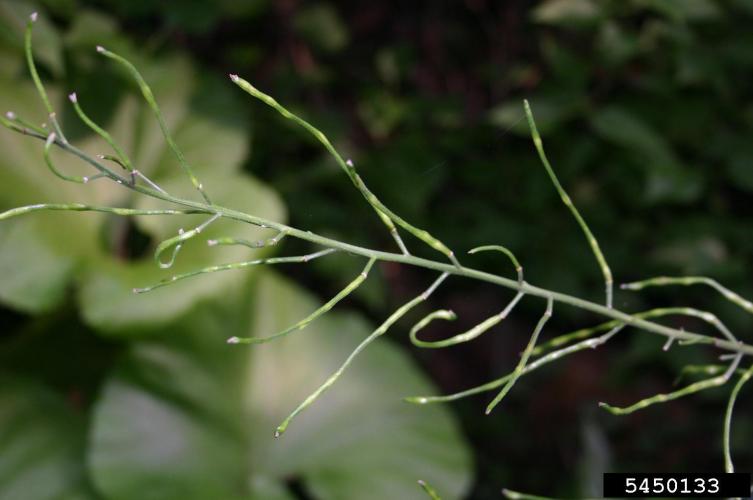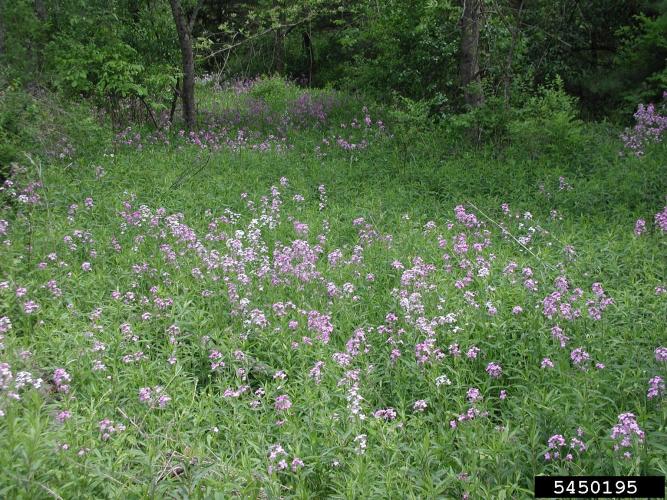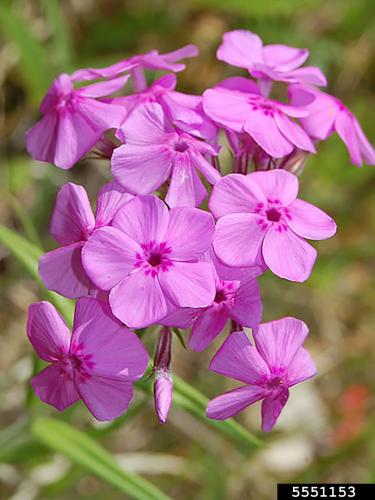Dame's Rocket
Identification
Appearance
Hesperis matronalis is a herbaceous, biennial forb that grows up to 4 feet in height. It may be included in native wildflower mix packets. Always check the list of species in wildflower mixes.
Foliage
The alternate leaves are broadly lanceolate and sessile or born on short petioles. Leaves are 2-6 inches long and hairy.
Flowers
The showy, fragrant flowers vary in color from white to purple or pink and develop in the late spring. Flowers develop in clusters on 3 foot tall stalks.
Fruit
The siliques (long slender fruits) are 2-4 inches in length and contain a large number of seeds.
Biology
This species is considered a watch list species.
Origin
Native to Europe
Habitat
Early successional forest, edge, floodplain forest, herbaceous wetland, open disturbed area, pasture, roadside, wacant lot, wet meadow, yard or Garden. Hesperis matronalis is frequently found in riparian or wetland habitats, as well as rich open woods. It is also found along roads and in gardens, where it is still planted.
Life cycle
Dame’s rocket generally produces a basal rosette the first year and flowers the following year. The plants are prolific bloomers and produce large quantities of seed from May through July. Individual plants may have several clusters of flowers at various stages of development, enabling the plant to produce both flowers and seeds at the same time.
Ecological Threat
Many people mistakenly believe Hesperis matronalis is a native wildflower. It may be included in native wildflower mix packets. Always check the list of species in wildflower mixes. Habitats invaded by this plant include open woodlands, prairies, roadsides, ditches, and other disturbed areas where native plants are crowded out. Hesperis matronalis was introduced from Europe as an ornamental around the time of European settlement. It continues to be widely used as an ornamental and can be found throughout North America.These plants crowd out native vegetation with their great numbers of seeds.
Vermont Distribution
Citations
Photo Credit
5450195, 5450174, 5450136, 5450176, 5450133, Leslie J. Mehrhoff, University of Connecticut, Bugwood.org
1562035, 1562032, Mark Frey, The Presidio Trust , Bugwood.org
Information Credit
Go Botany, Hesperis matronalis
Invasive Plant Atlas of New England
Colorado Weed Management Association
